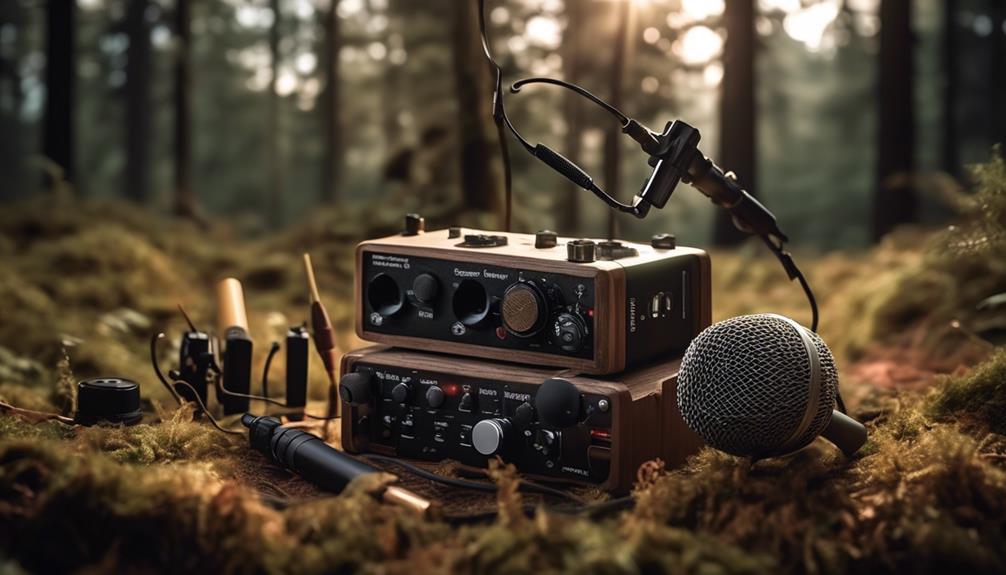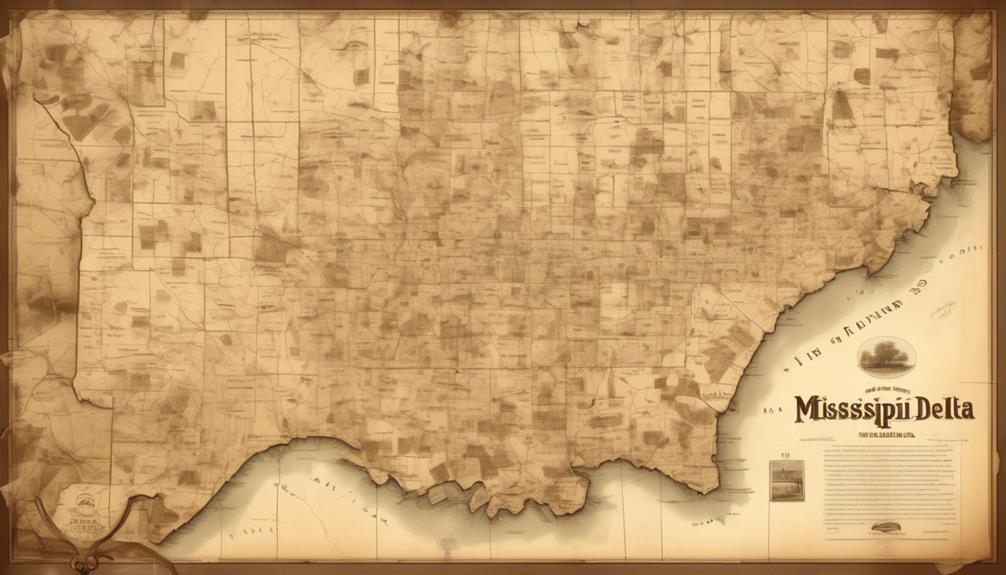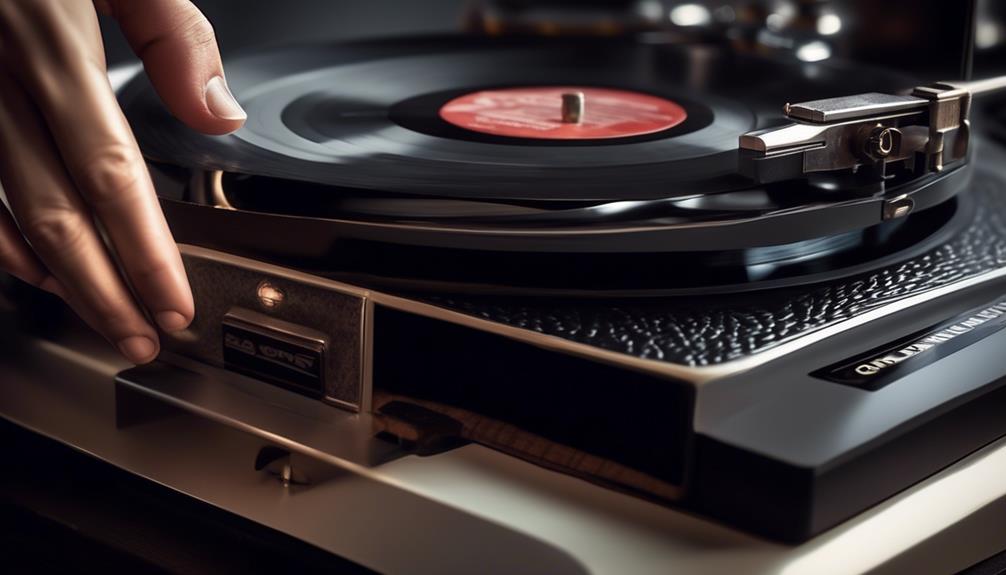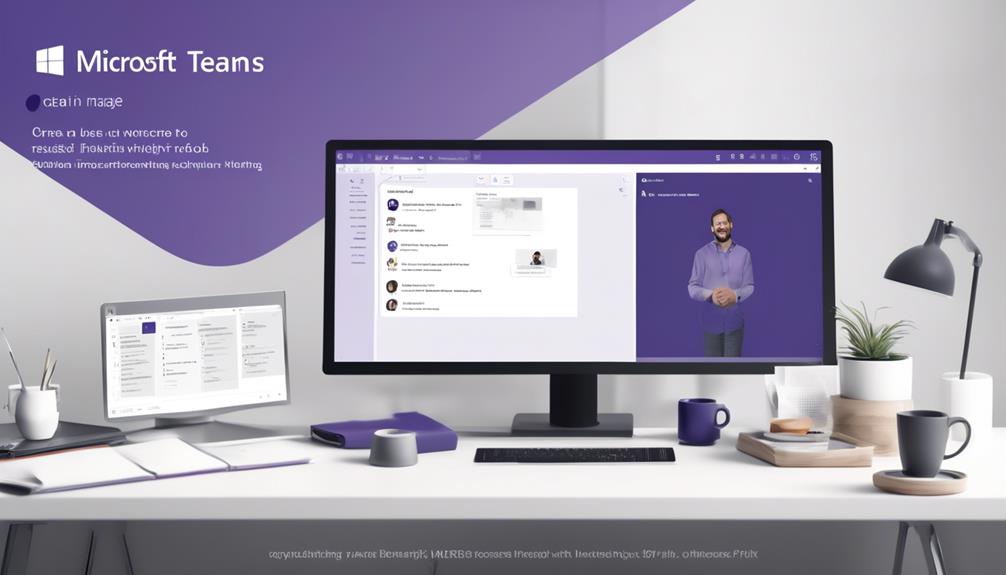Field recording, often underestimated in the era of digital production, possesses an eternal charm. It involves capturing the raw symphony of the world surrounding us, from the gentle rustle of leaves to the reverberations of lively city streets.
But what exactly does it entail, and why should we pay attention? Join us as we explore the nuanced world of field recording, uncovering its techniques, applications, and potential for creative exploration.
Key Takeaways
- Field recording originated in the early 20th century, initially focused on scientific research and documenting natural environments.
- The evolution of recording equipment has improved the quality and precision of field recordings, leading to diverse applications and techniques today.
- Field recording techniques and equipment include stereo recording for realistic spatial representation, portable recorders for mobility, and high-quality microphones for clarity and precision.
- Field recording has various uses in industries such as video games, film, acoustic ecology research, and the automotive industry, enhancing auditory experiences.
History of Field Recording
Phonography, or the field recording of natural sounds, has a rich history that dates back to the early 20th century and has since evolved to encompass a diverse range of applications and techniques.
The first recording of natural sounds can be traced back to the advent of audio recording technology, when pioneers sought to capture the essence of the world of field. Initially, the focus was largely on scientific research and the documentation of natural environments. However, with the advancement of technology, field recording expanded its horizons to include the recording of acoustic music and the exploration of creative soundscapes.
The history of field recording is closely intertwined with the development of audio recording equipment. The evolution of microphones and other recording devices played a pivotal role in enhancing the quality and precision of field recordings. As a result, the world of field recording witnessed a significant transformation, enabling recordists to capture intricate details of natural sounds with unprecedented clarity.
This historical progression laid the foundation for the diverse range of applications and techniques that define the field recording landscape today.
Techniques and Equipment

Field recording techniques and equipment involve the use of specialized tools and methodologies to capture and preserve natural sounds with high fidelity and accuracy.
When capturing sounds in outdoor environments, field recordists often utilize the stereo recording technique to provide a realistic representation of the spatial qualities of the environment.
Portable recording equipment, such as high-quality audio recorders, is essential for mobility and flexibility during recording sessions. These recorders need to have low self-noise and high-resolution audio capabilities to accurately capture the nuances of the sounds.
Professional-grade microphones and pre-amplifiers are crucial for capturing low-level and complex ambient noises with clarity and precision. Additionally, accessories like windscreens, shock mounts, and microphone cables are used to minimize unwanted noise and ensure the quality of the recorded sounds.
With the advancement of digital technology, field recording has been revolutionized, offering portable devices and software for recording and editing. These tools provide field recordists with powerful and convenient options to create exceptional soundscapes using field recordings.
Uses in Various Industries
Various industries utilize field recordings to enhance their auditory experiences and create immersive sound environments.
In the video game industry, field recordings serve as valuable source material for creating authentic environmental and ambient sounds, leading to more immersive and captivating gaming experiences. Whether capturing the bustling streets of urban environments or the serene tranquility of nature, field recordists use specialized recording equipment to gather high-quality audio that adds depth to virtual worlds.
These recordings are also used in film, where they contribute to the creation of realistic and captivating soundscapes, enriching the cinematic experience for audiences.
Additionally, field recordings play a pivotal role in acoustic ecology, providing an invaluable resource for researchers and professionals seeking to understand and document the sounds of natural and human-influenced environments.
Moreover, in the automotive industry, field recordings of vehicle sounds are instrumental in enhancing virtual driving experiences in simulators and video games, ensuring an authentic and immersive auditory environment for users.
Across various industries, field recording continues to be an essential tool for capturing and utilizing real-world sounds to elevate the quality and authenticity of auditory experiences.
Artistic Applications

Artistic applications of field recording encompass the exploration and utilization of environmental, industrial, and human-produced sounds in creative audio compositions and sound art.
Field recording serves as a foundational element in the creation of acoustic music, experimental music, and ambient recordings, providing unique and immersive sonic experiences.
The captured sounds can be utilized as raw material for sound effects in film, television, and video games, adding authenticity and depth to the auditory landscape.
Techniques such as spaced pair and M/S recording enable recordists to capture the spatial characteristics of sound, allowing for the creation of immersive and captivating auditory experiences in contemporary music and sound art.
Additionally, advancements in noise reduction technology have enhanced the quality of recorded sounds, providing greater flexibility and creative possibilities for artists.
The utilization of field recording in artistic contexts requires a deep understanding of sound, precise equipment, and a keen artistic sensibility to transform everyday sounds into captivating sonic landscapes.
Career Opportunities
Advancing from the artistic applications of field recording, career opportunities in this field involve the production of audio recordings in nontraditional settings, capturing a diverse range of natural and human-produced sounds, electromagnetic fields, or vibrations.
As field recordists, we're responsible for outdoor recording in various acoustic environments, utilizing techniques such as binaural recording to capture immersive 3D soundscapes. Our work encompasses meticulous audio editing and sound design, requiring a deep understanding of sample rate manipulation and the intricacies of capturing ambient noise. We employ high-quality equipment, including professional recorders, microphones, and pre-amplifiers, to ensure the highest fidelity in our recordings.
In this field, we contribute to a wide array of industries, from film and TV to video games and theater, providing essential sound effects and audio landscapes. This career demands adaptability, patience, and a willingness to work in potentially hazardous locations to capture the perfect sound. It's a profession that thrives on constant innovation and experimentation, pushing the boundaries of artistic expression through creative microphone placement and sound diffusion.
As professional field recordists, we play a crucial role in bringing a sense of authenticity and realism to audio production across various media.
Frequently Asked Questions
What Are Field Recorders Used For?
Field recorders are essential for capturing outdoor soundscapes, wildlife sounds, environmental ambience, and on-location interviews. They provide high-quality portable recording for nature recordings, audio journalism, and live events.
With advanced technology, field recorders enable precise location sound and remote interviews. Their versatility and portability make them crucial for capturing authentic audio in diverse environments.
What Is the Difference Between Field Recording and Studio Recording?
The difference between field and studio recording lies in the sound quality, environmental noise, and the balance between authenticity and control.
Field recording prioritizes capturing real-world soundscapes, embracing the spontaneity of ambient noise, and showcasing the creativity of capturing unique moments. It involves equipment limitations, location scouting, and post-production challenges to maintain the authenticity of the captured ambience.
Unlike studio recording, field recording emphasizes the art of capturing genuine, uncontrolled sounds.
How Do You Record in the Field?
When recording in the field, we use high-quality equipment like audio recorders, headphones, additional microphones, and wind protection.
Best practices involve creative microphone placement, capturing ambient noises, and adapting to environmental challenges such as wildlife and urban sounds.
Operating in remote locations, we must contend with wind, weather, and potentially dangerous situations.
Techniques for capturing ambience, sound effects, and conducting interviews contribute to successful field recording.
Do I Need a Field Recorder?
Yes, you need a field recorder for high-quality audio. The portability factor is crucial in diverse environmental conditions and remote locations.
Noise reduction and sound isolation are vital for capturing pristine recordings. Various equipment options cater to different needs, with battery life being a key consideration.
Recording techniques and budget considerations play a significant role in choosing the right field recorder.
Conclusion
In conclusion, field recording is like capturing a symphony of the world, with each sound telling its own story.
Just as a painter uses different colors to create a masterpiece, field recordists use various techniques and equipment to capture the rich tapestry of sounds around us.
From the rustling of leaves to the roar of a city, field recording allows us to preserve and manipulate these sonic landscapes, shaping them into immersive experiences for all to enjoy.










